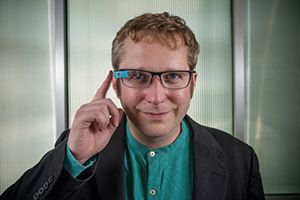CHAT (Cetacean Hearing Augmentation and Telemetry) and UHURA (Unsupervised Harvesting and Utilization of Recognizable Acoustics)
Working with Dr. Denise Herzing of the Wild Dolphin Project, we are creating wearable computers for conducting two-way communication experiments with cetaceans. With CHAT, one researcher uses the waterproof system to broadcast a sound, associated with an object with which dolphin's like to play. A second researcher, upon detecting the sound, passes the object to the first. The researchers pass objects back and forth, further associating the sound with the object. The goal is to see if the dolphins mimic the sound in order to "ask" for the play object. The wearable computer uses pattern recognition technology to detect these mimicked sounds. In a more long-term effort, UHURA uses pattern discovery techniques in an attempt to uncover fundamental units of dolphin vocalizations.

The Contextual Computing Group (CCG) creates wearable and ubiquitous computing technologies using techniques from artificial intelligence (AI) and human-computer interaction (HCI). We focus on giving users superpowers through augmenting their senses, improving learning, and providing intelligent assistants in everyday life. Members' long-term projects have included creating wearable computers (Google Glass), teaching manual skills without attention (Passive Haptic Learning), improving hand sensation after traumatic injury (Passive Haptic Rehabilitation), educational technology for the Deaf community, and communicating with dogs and dolphins through computer interfaces (Animal Computer Interaction).


